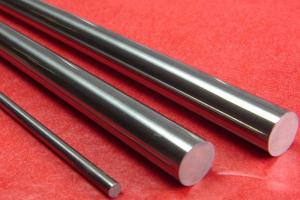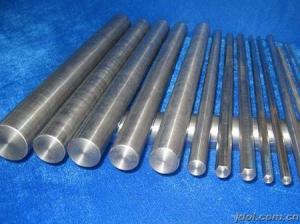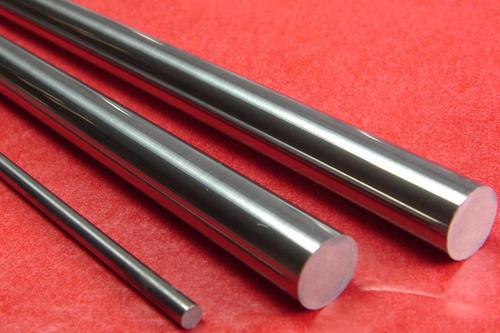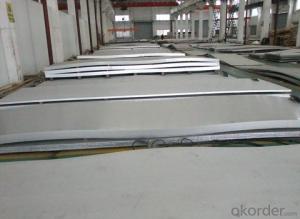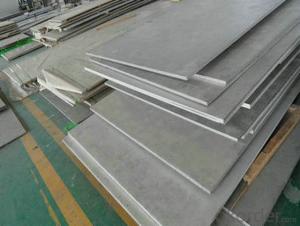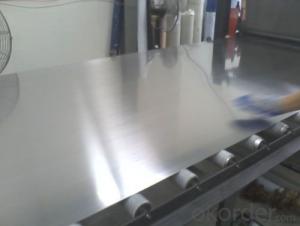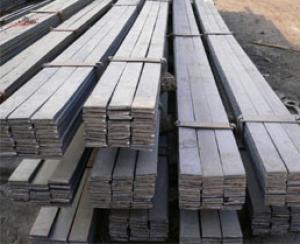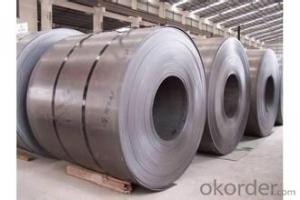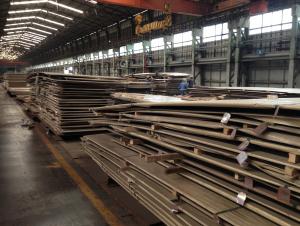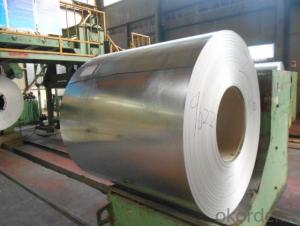High Quality Stainless Steel Profile 100mm
- Loading Port:
- Shanghai
- Payment Terms:
- TT OR LC
- Min Order Qty:
- 50 m.t.
- Supply Capability:
- 5000 m.t./month
OKorder Service Pledge
OKorder Financial Service
You Might Also Like
Product Introduction of High Quality Stainless Steel Profile 100mm:
Our Stainless Steel products including the stainless steel sheet/plate, stainless steel coil, stainless steel rod/bar, stainless steel angle, stainless steel strip, stainless steel flat, carbon steel products and alloy steel materials. It also can supply the processing of surface, like No.4, BA, HL, SB, 8K, and so on.
Loading Quantity of High Quality Stainless Steel Profile 100mm: 25 Tons/20FCL.
Grade of High Quality Stainless Steel Profile 100mm: 201, 306, 316 Etc.
Delivery Time of High Quality Stainless Steel Profile 100mm: 20 days Per Container.

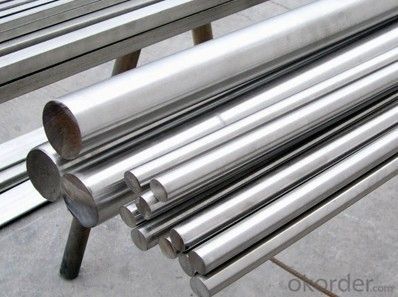
Application of High Quality Stainless Steel Profile 100mm:
| Finish | Thickness | Characteristics | Applications |
| No. 1 | 3.0mm~50.0mm | Finished by hot-rolling, annealing and pickling, characterized by white pickled surface | Chemical industry equipment, Industrial tanks |
| No. 2B | 0.3mm~6.0mm | Finished by heat treatment, pickling after cold rolling, followed by skin pass line to be more brighter and smooth surface | General Application Medical Instruments,Tableware |
| No. BA (Bright Annealed) | 0.5mm~2.0mm | Bright heat treatment after cold rolling | Kitchen utensil, kitchen ware,architectural purpose |
| No. 4 | 0.4mm~3.0mm | Polishing with No. 150 to No.180 mesh abrasivesThe most popular finishes | Milk & Food processing acilities, Hospital Equipment, Bath-tub |
| HL(Hair Line) | 0.4mm~3.0mm | Finished by continuous linear polishing | Architectural purposes, escalators, kitchen ware vehicles |
Packaging & Delivery of High Quality Stainless Steel Profile 100mm
| Packaging Detail: | standard seaworthy export package or as customers required |
| Delivery Detail: | Normally according to the order quantity or upon negotiation. |
Specification of High Quality Stainless Steel Profile 100mm:
1).Standard : GB,ASTM,AISI,JIS,SUS,EN
2).Material : 304,304L,304N,304LN,301,305,309S,310S,316,316L,316N,316LN,316Ti,
317,317L,321,347,201,202
3).Outside Diameter: From 4mm to 2500mm(1/8''inch-120''inch)
4).Wall Thickness : Sch5S-SchXXS(1mm-150mm)
5). Length : 3m,4m,5.8m,6m,12m or as required
6). Chemical composition:
7).Surface :Annealing ,polish,pickling,bright ,sand blast ,etc
8).Packing: 1.plastic cap with both ends 2.steel strip bundled package3.wooden case,wooden
pallet package4.container or bulk 5. as customers' requestment
9).Application:petroleum ,chemical industry,bolier ,heat exchange,high temperature
resistant transmission fluid pipe in power station,ship with pressure pipe,construction
and so on
FAQ
Q: CAN YOU PROVIDE MILL TEST CERTIFICATE?
A: YES! Mill Test Certificate for High Quality Stainless Steel Profile 100mm are available.
Q: CAN YOU MAKE DDQ (DEEP DRAWING QUALITY)?
A: YES. Our material has been widely used for producing Stainless Steel Pots and Stainless Steel Sinks, which have strict request for good deep drawing quality.
Q: HOW TO GET A SAMPLE?
A: FREE High Quality Stainless Steel Profile 100mm are available for your checking and testing. And to get free samples, you need to send us you detailed receiving address (including post code) and your DHL/FedEx/UPS account for collecting samples, courier cost will be paid in your side.
- Q: What are the different types of stainless steel sheet finishes for medical applications?
- Medical applications commonly utilize various types of stainless steel sheet finishes, each designed to possess specific qualities and characteristics necessary for such environments. A prevalent finish is the 2B finish, acquired through a cold-rolling process, which yields a smooth, reflective surface. This finish is frequently employed in medical instruments and equipment due to its ease of cleaning and high resistance to corrosion. Additionally, the No. 4 finish, also referred to as a satin finish, is widely used in medical cabinets and surfaces. This finish showcases a brushed appearance and offers a favorable combination of aesthetics and functionality. It boasts easy cleaning capabilities and reliable corrosion resistance. For more specialized applications, options like the No. 8 mirror finish are available. This finish exhibits a highly reflective surface and often finds application in surgical instruments and other high-end medical equipment. It not only presents a visually appealing surface but also demonstrates excellent corrosion resistance. Furthermore, alternative finishes, such as the bead blast finish, contribute to the medical equipment industry. This finish imparts a matte surface with a textured appearance, ideal for medical equipment requiring a non-reflective surface. Ultimately, the selection of a stainless steel sheet finish for medical applications depends on the specific requirements of the equipment or surface. Each finish possesses distinct advantages and characteristics, necessitating careful consideration to ensure optimal performance and longevity in a medical environment.
- Q: Can stainless steel sheets be used in industrial applications?
- Yes, stainless steel sheets can be used in industrial applications. Stainless steel is known for its durability, corrosion resistance, and strength, making it suitable for various industrial sectors such as construction, automotive, manufacturing, and food processing. It is commonly used for building structures, machinery components, storage tanks, and in environments that require high hygiene standards.
- Q: Are stainless steel sheets resistant to oxidation?
- Yes, stainless steel sheets are resistant to oxidation due to the presence of chromium in their composition, which forms a protective layer that prevents the steel from rusting or corroding.
- Q: What are the different surface textures available for stainless steel sheets?
- Stainless steel sheets come in a variety of surface textures to meet different aesthetic and functional requirements. Some of the common surface textures available for stainless steel sheets are: 1. No. 1 Finish: This is the most common surface texture, also known as mill finish. It has a smooth, reflective surface that is obtained by hot rolling the stainless steel sheet. 2. No. 2B Finish: This surface texture is achieved through a process called cold rolling and annealing. It has a slightly matte appearance with a smooth, non-reflective finish. 3. No. 4 Finish: Also known as brushed or satin finish, this surface texture is obtained by mechanically polishing the stainless steel sheet. It has a brushed appearance with fine parallel lines, providing a textured and decorative finish. 4. No. 8 Finish: This surface texture, also referred to as mirror or reflective finish, is achieved by polishing the stainless steel sheet to a high shine. It has a glossy, mirror-like appearance that reflects light and adds a luxurious touch to applications. 5. Embossed Finish: This surface texture involves impressing a pattern or design onto the stainless steel sheet. It can range from simple textures like diamond or linen patterns to more intricate designs, providing both visual interest and improved grip for certain applications. 6. Bead Blast Finish: This surface texture is created by blasting the stainless steel sheet with fine glass beads or other abrasives. It produces a uniform, matte finish with a slightly roughened texture, suitable for applications where a subdued appearance is desired. 7. Etched Finish: This surface texture involves chemically etching the stainless steel sheet to create patterns or designs. It can produce intricate and detailed textures, offering a unique and artistic finish. These are just a few examples of the different surface textures available for stainless steel sheets. Each texture has its own distinct characteristics, allowing for a range of design possibilities in various industries such as architecture, interior design, automotive, and more.
- Q: What does stainless steel plate mean?
- The corrosion resistance of stainless steel mainly depends on its alloy composition (chromium, nickel, titanium, silicon, aluminum, manganese, etc.) and the internal structure of the alloy, and the main role is chromium. Chromium has high chemical stability, can form a passive film on the steel surface, so that the metal is isolated from the outside, protect the steel plate from oxidation and increase the corrosion resistance of the steel plate. When the passive film is destroyed, the corrosion resistance will decrease.
- Q: Is there any magnetism in 304 stainless steel?
- Stainless steel friends are many, there are some differences in color, but not very good to distinguish. Can be judged according to the magnetic (magnet test): magnetic was 202 (ferritic stainless steel) magnetic or nonmagnetic small is 304 (stainless steel), are generally magnetic, but strength difference.
- Q: Can stainless steel sheets be used for elevator ceilings or floors?
- Yes, stainless steel sheets can be used for elevator ceilings or floors. Stainless steel is a durable and resistant material, making it suitable for areas that require frequent cleaning and maintenance, such as elevator interiors. Additionally, stainless steel offers an aesthetically pleasing and modern look, enhancing the overall appearance of elevator ceilings and floors.
- Q: Are stainless steel sheets suitable for railway applications?
- Yes, stainless steel sheets are suitable for railway applications. They offer excellent corrosion resistance, durability, and strength, making them ideal for various components such as train carriages, structural elements, and infrastructure. Additionally, stainless steel's low maintenance requirements and ability to withstand harsh environmental conditions make it a reliable choice for railway applications.
- Q: Can stainless steel sheets be used for food storage containers?
- Food storage containers can indeed be made from stainless steel sheets. Many people choose stainless steel for their food storage containers because it is durable, non-reactive, and resistant to corrosion. The stored food does not acquire any taste or odor, making it safe to store for extended periods. Moreover, stainless steel is easy to clean and maintain, ensuring optimal hygiene for food storage. Furthermore, stainless steel containers are often favored for their eco-friendly characteristics as they can be reused, thereby reducing the need for single-use plastic containers. In conclusion, stainless steel sheets are a dependable and appropriate option for food storage containers.
- Q: Are stainless steel sheets resistant to sulfuric acid?
- Yes, stainless steel sheets are generally resistant to sulfuric acid.
Send your message to us
High Quality Stainless Steel Profile 100mm
- Loading Port:
- Shanghai
- Payment Terms:
- TT OR LC
- Min Order Qty:
- 50 m.t.
- Supply Capability:
- 5000 m.t./month
OKorder Service Pledge
OKorder Financial Service
Similar products
Hot products
Hot Searches
Related keywords

